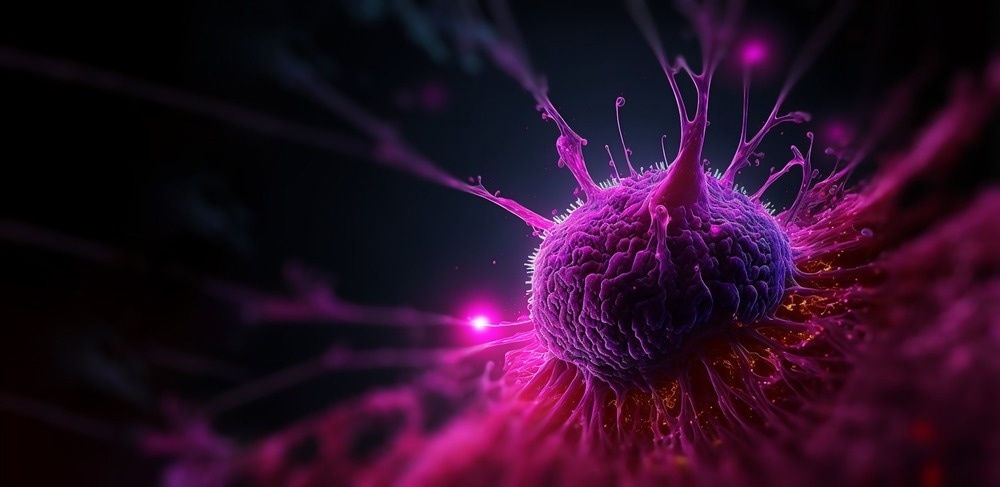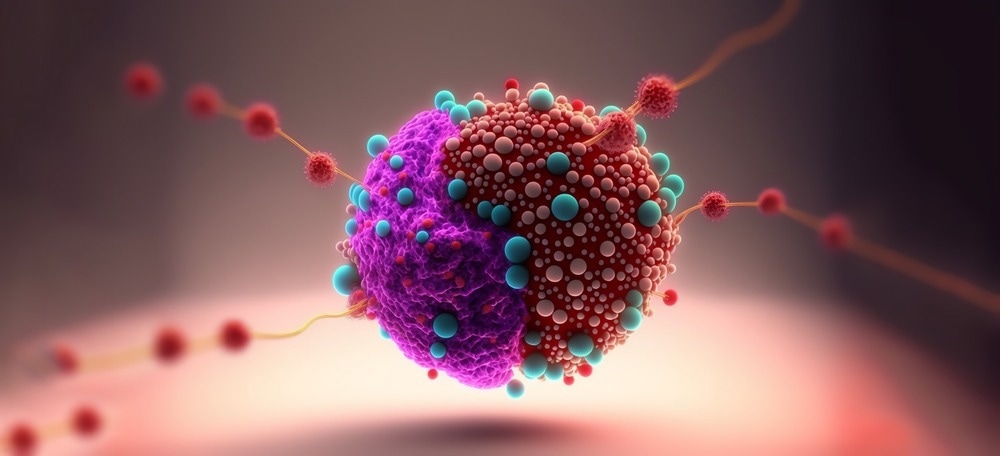Tumor heterogeneity can cause non-uniform distribution of cancer cell subpopulations that are genetically distinct across and within tumor sites, as well as variations in their molecular signature.

Image Credit: CI Photos/Shutterstock.com
Tumors can comprise diverse subpopulations of cells with distinct genetic, phenotypic and functional characteristics, with some cancer cells having genetic mutations that may not be present in other cancer cells within the tumor. Tumor heterogeneity plays a significant role in effective diagnosis and treatment management, including response to treatment, as well as in advancing cancer research.
What is Tumor Heterogeneity?
Tumor heterogeneity can be used to describe the differences between the same type of tumor observed within different patients, the differences between cancer cells in a single tumor, or differences between a primary and secondary tumor.
With analysis at the population level, tumor heterogeneity can be categorized into inter-tumoral and intra-tumoral heterogeneity. Inter-tumoral heterogeneity can be defined as genetic differences between patients with the same histologically diagnosed tumor. This type is considered to be due to patient-specific factors such as germline genetic differences or variations in the somatic mutation profile, as well as environmental variables.
Contrastively, intra-tumoral heterogeneity describes genetic differences found between cancer cells within the same patient in a single tumor, where different areas can comprise various genetic or phenotypic features.
Within the broad category of intra-tumoral heterogeneity, there can be various manifestations, including temporal heterogeneity. Temporal heterogeneity includes genetic variations in the molecular profile of individual tumors over time due to genetic evolution or being exposed to selective pressures from clinical treatments.
Causes of Tumor Heterogeneity
Genetic mutations, which can develop as a result of genomic instability, are a critical driving force for the occurrence and growth of many different tumors in somatic cells, and this can range from single nucleotide base substitutions to whole-genome doublings.
Genomic instability may be due to many factors, including exposure to exogenous mutagens, including ultraviolet radiation or tobacco smoke, which can result in DNA breaks. Additionally, endogenous factors, such as alterations in processes, including DNA replication, errors in repair mechanisms and oxidative stress, can also cause cancer-driving genetic mutations.
Another variable that can contribute to tumor heterogeneity includes microenvironment-related factors as well as site-specific factors. These can result in the molecular profile of tumor cells in different sites being diverse due to the differences in oxygen levels, nutrients and immune cell infiltration that can influence cell behavior.
Epigenetic changes can also lead to phenotypic diversity in tumors, with alterations in the gene expression of cancer cells over time or due to exposure to clinical interventions causing further variability in the tumor molecular profile. With the evolution of cells that have become more tolerant of drug treatments, tumor cells have developed resistant mutations, causing ineffective treatment.
Case Studies: Examples of Tumor Heterogeneity
An example of resistant alterations that can contribute to tumor heterogeneity and ineffective treatment can be seen in non-small cell lung cancer (NSCLC), which utilizes epidermal growth factor receptor (EGFR) tyrosine kinase inhibitors (TKIs) as a key drug treatment. EGFR TKIs aim to target EGFR-mutated NSCLC in patients who are usually provided with poor prognoses before this therapy is introduced.
A study has found mutations that are associated with resistance to EGFR TKIs include EGFRT790M and MET amplifications. The resistance to this key drug treatment for NSCLC patients can be critical, leading to the development of new generation EGFR TKIs that are less impacted by resistance and more effective in treating the disease.
Heterogeneity observed within breast cancer has been found across metastatic lesions within the same patient and even in a single tumor lesion. Breast cancer is categorized using clinical immunohistochemistry tests that assess receptor status, analyzing estrogen, progesterone and human epidermal growth factor receptor 2, which enable clinical subtyping and determination of prognoses and treatment management.
Receptor status mutations have been found after neoadjuvant chemotherapy in loco-regional breast cancer, as well as being documented between matched primary and metastatic breast cancer lesions. The changes in receptor statuses after neoadjuvant treatment or as a result of tumor progression can indicate poor prognosis and impact therapeutic strategies.

Image Credit: CI Photos/Shutterstock.com
Therapeutic Strategies Addressing Heterogeneity
Combination therapies can be used to overcome molecular alterations as they can be used for multiple targets within tumor cells, leading to more effective treatment.
Adaptive therapy can also address heterogeneity, with the goal being to prevent cancer progression by allowing a significant population of chemo-sensitive cells to survive for this population to suppress the proliferation of chemo-resistant tumor cell subpopulations. This therapy has been tested in clinical trials and has shown promise in prostate cancer patients.
Additionally, personalized medicine has also become a method to reduce tumor heterogeneity, with an individual’s cancer profile being analyzed to provide a personalized treatment plan that targets tumor mutations.
This field has become popular as it addresses the cancer treatment problem that uses a ‘one-shoe-fits-all’ approach to patients that may have the same cancer type but different mutations, enabling effective treatment and positive prognoses.
Future Directions and Research
With the knowledge of tumor heterogeneity, research into evolutionary dynamics, which investigates how tumors evolve over time, can be used to determine the survival and proliferation of resistant cells. This is significant as this comprehension can be critical for developing advanced treatment strategies, with evolutionary tools being used with treatments to delay and prevent cancer resistance.
Additionally, artificial intelligence can be used for analyzing the abundance of complex datasets generated by medical examinations of patients with cancer, which can be used to predict the course of a patient’s disease, including tumor growth and heterogeneity patterns.
Using such innovative strategies may enable effective treatment plans to be developed at an earlier stage, with patient-specific and resistant mutations being accounted for, leading to better prognoses and quality of life for patients.
Tumor heterogeneity plays a significant role in the development and treatment of cancer, and the use of tumor heterogeneity strategies is required to target mutations and resistance in tumor cells, which improves patient outcomes. While this evolving area of research has led to the development of innovative therapies such as personalized medicine, ongoing research is required for translation into effective clinical strategies at a global level.
Sources
Dagogo-Jack I, Shaw AT. Tumour heterogeneity and resistance to cancer therapies. Nature Reviews Clinical Oncology. 2017;15(2):81-94. doi:10.1038/nrclinonc.2017.166
Gallaher JA, Enriquez-Navas PM, Luddy KA, Gatenby RA, Anderson ARA. Spatial heterogeneity and evolutionary dynamics modulate time to recurrence in continuous and adaptive cancer therapies. Cancer Research. 2018;78(8):2127-2139. doi:10.1158/0008-5472.can-17-2649
Heintzman DR, Fisher EL, Rathmell JC. Microenvironmental influences on T cell immunity in cancer and inflammation. Cellular & Molecular Immunology. 2022;19(3):316-326. doi:10.1038/s41423-021-00833-2
Janku F. Tumor heterogeneity in the clinic: Is it a real problem? Therapeutic Advances in Medical Oncology. 2013;6(2):43-51. doi:10.1177/1758834013517414
Li A, Keck JM, Parmar S, et al. Characterizing advanced breast cancer heterogeneity and treatment resistance through serial biopsies and comprehensive analytics. npj Precision Oncology. 2021;5(1). doi:10.1038/s41698-021-00165-4
Mascheroni P, Savvopoulos S, Alfonso JC, Meyer-Hermann M, Hatzikirou H. Improving personalized tumor growth predictions using a Bayesian combination of mechanistic modeling and machine learning. Communications Medicine. 2021;1(1). doi:10.1038/s43856-021-00020-4
Nan X, Xie C, Yu X, Liu J. EGFR TKI as first-line treatment for patients with advanced EGFR mutation-positive non-small-cell lung cancer. Oncotarget. 2017;8(43):75712-75726. doi:10.18632/oncotarget.20095
NCI Dictionary of Cancer terms. National Cancer Institute. Accessed September 27, 2023. https://www.cancer.gov/publications/dictionaries/cancer-terms/def/tumor-heterogeneity.
West J, You L, Zhang J, et al. Towards multidrug adaptive therapy. Cancer Research. 2020;80(7):1578-1589. doi:10.1158/0008-5472.can-19-2669
Last Updated: Oct 16, 2023